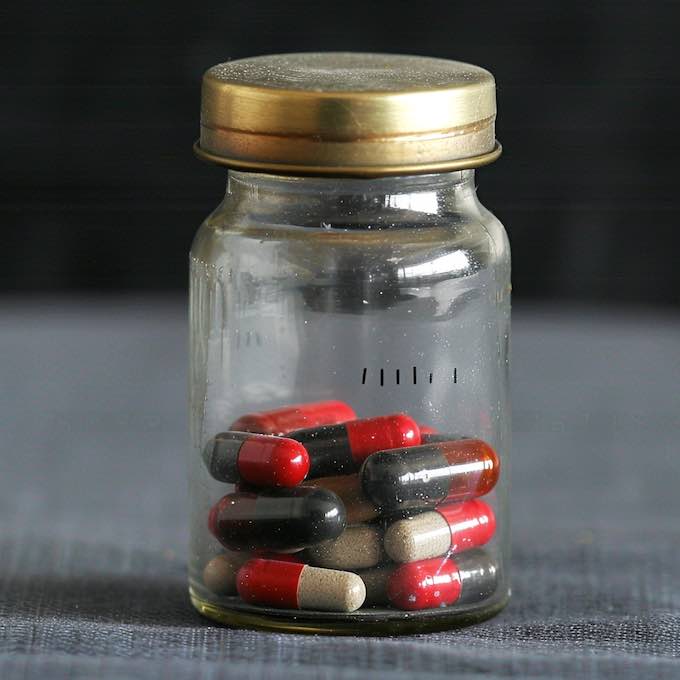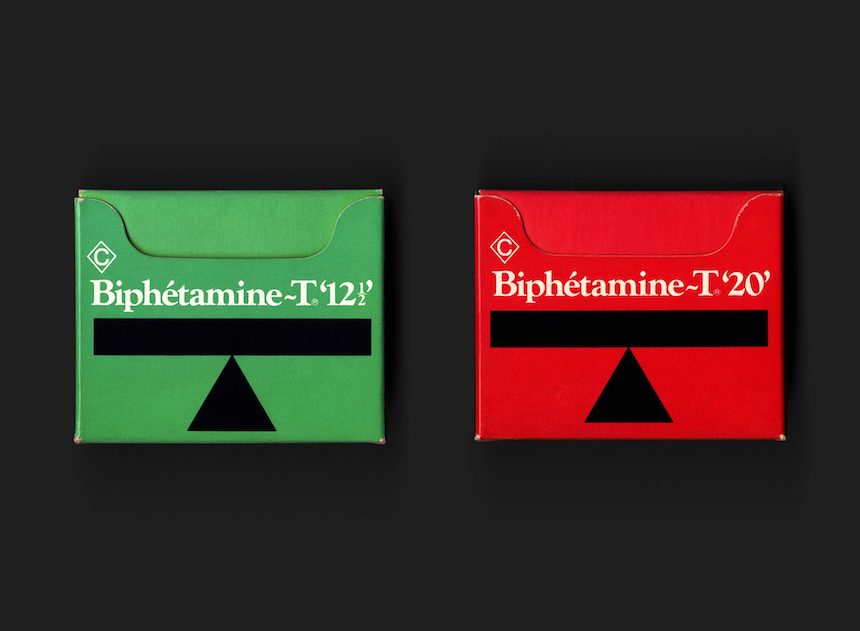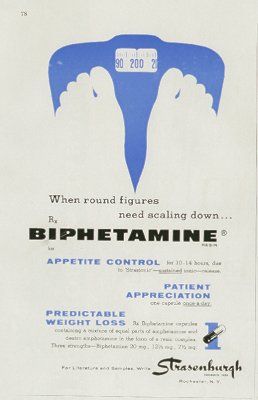Pennwalt Strasenburgh Canada served as the Canadian branch of Pennwalt Strasenburgh Laboratories, based in Rochester, New York. The company manufactured and distributed pharmaceuticals globally, with operations in Canada, Mexico, and Ireland. Among its main products was Biphetamine 20, an amphetamine-based drug marketed as an appetite suppressant and prescribed by doctors to aid in weight loss. The year was 1960. The patent was sent for approval in 1960 and production started in 1963.
Black Beauties or some call black beauty drug have recently resurfaced in popular culture due to their appearance in the Netflix show Russian Doll.
Biphetamine 20 Packaging – Image Courtesy of Canada Modern
What is in Black Beauty Drug?
Black Beauties or the black beauty drug, also known as Biphetamine 20, is a street name for a combination amphetamine drug. Each pill or capsule contained 10mg of amphetamine and 10mg of dextroamphetamine and was initially prescribed under the trade name Biphetamine 20.
Under the patent submission; the inventors Edwin E Hays and Bernard A Becker stated;
Amphetamine and its pharmaceutical useful addition salts, and also phenyl tertiary butyl amine, now called by the generic name phenteramine, and its pharmaceutical useful addition salts are well known effective appetite suppressants. An object of this invention is to provide an effective appetite suppressant composition having reduced side effects such as dryness of the throat, Another object is to provide an appetite suppressant which remains effective as an appetite suppressant over a longer period of continued use by the patient than does amphetamine or phenteramine.
However, the use of Black Beauties took a darker turn. Misuse of amphetamines resulted in severe health consequences, including addiction, cardiovascular problems, and mental health issues.
Biphetamine 20 – Methamphetamine 60s Advertisements
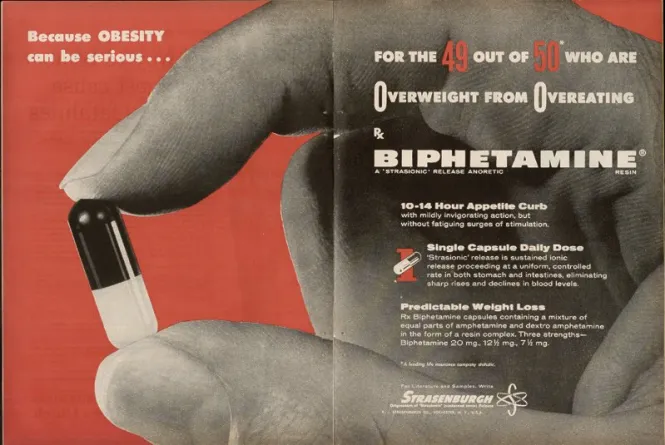
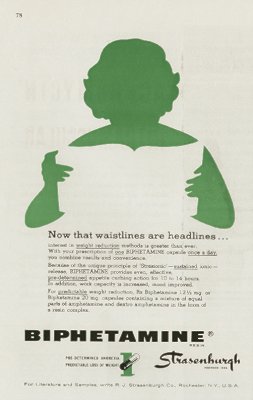
Street Names of Black Beauties Drug
Here is a list of street names or slang terms that have been associated with Black Beauties drug pills:
- Black beauties
- Black beauty drug
- Black Birds
- Black Bombers
- Black Mollies
- Black Cadillacs
- Black Caps
- Black Molly
- Black Whack
- Black Thunder
- Speed
- Amps
- Pep Pills
- Truck Drivers
- Dexies
- Wake-Ups
- Christmas Trees
- Blue Boys
- Blue Birds
- Blue Mollies
- Blue Capsules
The Peak and Decline of Recreational Use of Biphetamine 20 in the 1960s and 70s
The recreational use of Biphetamine 20, or Black Beauties, this drug reached its zenith during the 1960s and 70s. People turned to these pills to experience euphoria or heightened alertness, seeking a low-cost and legal substitute for cocaine. However, in 1965, their usage became illegal except when prescribed, and the Controlled Substances Act of 1970 sounded the death knell for their popularity. Eventually, Biphetamine 20 was completely removed from the market in 1998.
Understanding Amphetamine
Amphetamines are known for their stimulating effects, accelerating the transmission of signals between the brain and body. This increased signal speed results in heightened alertness and physical activity. People use amphetamines for various purposes, from staying awake during work and studying for exams to enhancing athletic performance.
How did black beauties feel like?
Amphetamines prompt the brain to release dopamine, the “feel-good” chemical responsible for regulating mood, cognition, and movement. Their use can lead to pleasurable effects such as euphoria, enhanced clarity of thought, increased self-confidence, heightened sociability, and bursts of energy. Yet, the abuse of amphetamines can have dire consequences.
What is Dextroamphetamine?
Dextroamphetamine, commonly prescribed for Attention Deficit Hyperactivity Disorder (ADHD), falls within the stimulant category. It can enhance focus, attention span, and behavioral control. However, like other stimulants, dextroamphetamine carries a high risk of abuse and dependence, making it essential to follow medical guidance strictly.
Dextroamphetamine Abuse
Misusing dextroamphetamine can lead to a host of problems, including:
- Cardiovascular issues, including high blood pressure and rapid heartbeats.
- Agitation, anxiety, and paranoia.
- Insomnia and sleep disturbances.
- Malnutrition and weight loss due to reduced appetite.
- Psychotic symptoms like hallucinations and delusions.
- Behavioral changes, such as increased aggression and hostility.
- Mood swings, depression, and suicidal thoughts.
- Seizures, muscle twitching, and tremors.
- Sexual dysfunction.
Amphetamine and Dextroamphetamine in Black Beauties
When amphetamine and dextroamphetamine were combined in the Black Beauty pill, the risk multiplied exponentially. Without professional supervision and medical guidance, this combination became a recipe for disaster. The Black Beauty pill, a fusion of amphetamines and dextroamphetamine, was often used recreationally to induce euphoria, enhance performance, or extend wakefulness. This drug provided heightened alertness and concentration when taken as directed by stimulating the release of dopamine and other neurotransmitters in the brain. However, the consequences of abuse were severe.



